Vollie Belle Haston - The Murder Trials
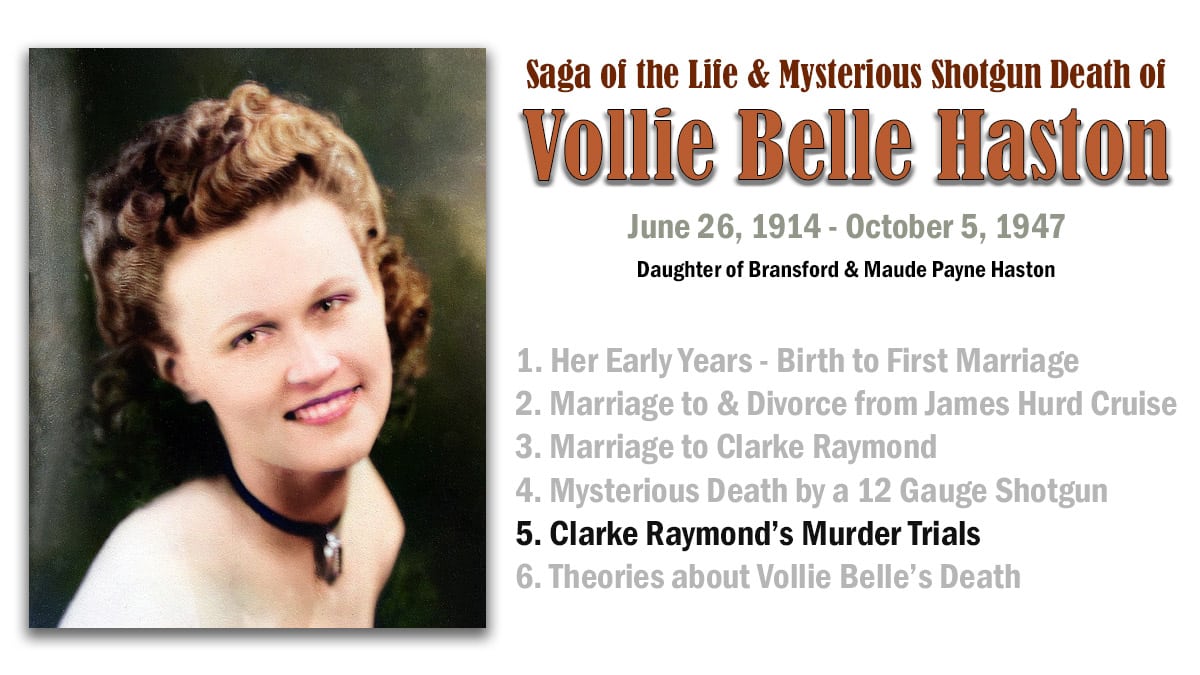
Co-Authors: Becky Hitchcock Harris and Wayne Haston
I have learned that there is a lot of information “out there” (be it factual or inaccurate lore) about Vollie Belle Haston’s life and tragic death. I’d love to hear anything you have heard or know about Vollie Belle’s life or her death. WayneH37@aol.com
Oldtimers in and from Van Buren County still talk about the murder trials of 1947 and 1948, in which Clarke Raymond (former Montana resident) was tried for the murder of his wife, Vollie Belle née Haston, a lifelong resident of Van Buren County, Tennessee.
As you saw from the previous article in this series, it was a strange case! People today who look back on the case still “scratch their heads” trying to figure out how Clarke Raymond could claim his wife accidentally shot herself two times with a pump 12 gauge shotgun.
Even though justice generally came more quickly in the 1940s than it does today, it took more than a year to resolve the case.

Options of Four Types of Murder Charges

Timeline of Key Events in the Vollie Belle Haston Raymond Murder Trial
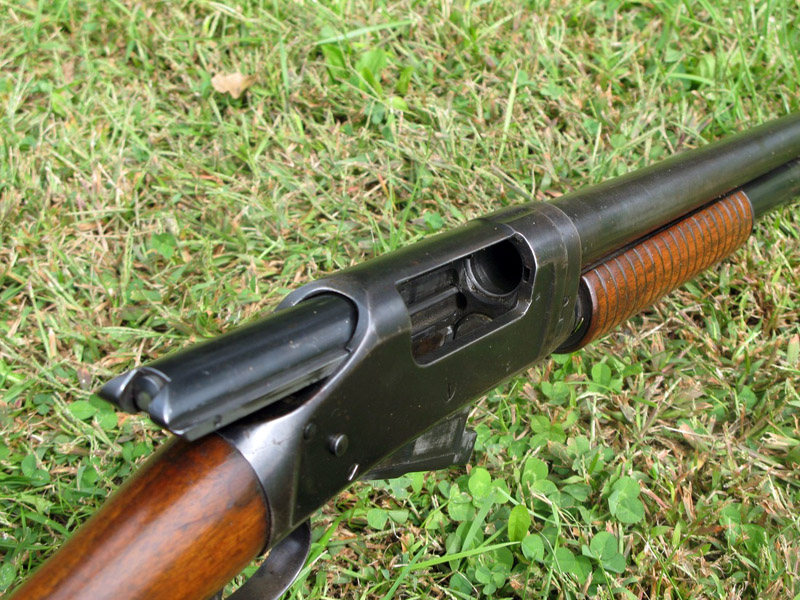
The killing weapon was a Winchester Model 97 (1897) pump-action 12 gauge shotgun. The fact that Vollie Belle was killed with two shots, the second shot fired a few (perhaps four) seconds after the first one, made it difficult for the defendant's attorneys to convince the jury that Vollie Belle accidentally shot herself. Other evidence made it difficult for the defense to argue that someone other than Clarke Raymond fired the shots.
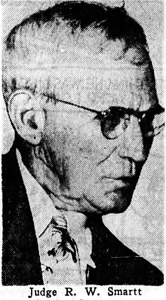
A Grand Jury for the Circuit Court of Van Buren County (7th Judicial District) returned an indictment of first degree murder in the case State of Tennessee v. Clarke Raymond. The Circuit Judge was R.W. Smartt (photo) of McMinnville, TN.
Grand Jury: Clifton Sparkman, Claud Templeton, Brintz Maynard, W.M. Austin, Bill Dodson, John Delong, Frank Rozzell, O.J. Swope, Huston Hillis, Haskel Hitchcock, J.P. Hale, and Lee Miller. The trial was set for November 25, 1947.
The Honorable R.W. Smartt was the judge in this case and all of the other Circuit Court actions.
The defendant was represented by Jim Camp of Sparta, TN, and Lewis S. Pope of Nashville.
The State (prosecution) was represented by Jim Brady, C.D. Lamb, Robert S. Brady, and E.C. Haston (relative of Vollie Belle Haston).
The case began on Tuesday morning, November 25, and continued to the next day. Clarke Raymond pleaded "not guilty."
Jury: Herb Frady, Grover Hennessee, Earl Hillis, Kenneth Slatton, Dalton Delong, Merle Savage, Glenn Deweese, Gene Christian, Albert Deweese, Hollis D. Myers, Winton Hillis, and Floyd Bryant.
Clarke's mother, Mrs. C.C. Raymond of San Diego, CA, his brother, D.D. Raymond, and uncle C.R. Clarke of Minneapolis, MN were with him during the trial.
Raymond's defense was built around the possibility of the murder having been committed by a third person.
After six hours of deliberation, the trial ended in a mistrial because of a hung jury (eight to four in favor of acquittal). A retrial was scheduled for April 27, 1948.
On the day following the end of the first trial, Clarke was released on a $7,500 bond. He was back in Montana on December 6, 1947 and left there on December 9 to visit his mother and sisters in San Diego, California.
Again, R.W. Smartt was the judge. Jury members: Theron Bouldin, John Roberts, Rayburn Hennessee, J.A. Walling, Lee Myers, Buck Binkley, John Snider, Jonah Vanwinkle, George M. Dodson, Raymon Hensley, Clarence Simmons, Willard Bouldin, and Walter Martin.
After deliberating only 50 minutes, the jury found Clarke Raymond guilty of voluntary manslaughter and set his punishment at not more than two years in the Tennessee State Penitentiary.
This was the minimum penalty for voluntary manslaughter. Clarke had 30 days to file for a new trial. He was released on a $7,500 bond until the application for a third trial could be granted.
According to the Sparta Expositor, Clarke Raymond was back "home" in Sheridan, Montana by May 6, 1948.
A motion for a new trial was filed on May 17, 1948. June 1, 1948 was set for the date of a hearing for the defendants attorneys to make their arguments for a new trial.
Clarke Raymond's attorneys presented four grounds for a new trial:
1. That there was no material evidence to sustain the verdict.
2. That the greater weight of evidence preponderates against the verdict and in favor of the defendant.
3. That the court was in error in not allowing the defendant's claim that some highway patrolmen threatened him.
4. That the jury was not followed proper protocol in charging the jury.
After "due consideration" Clarke Raymond's appeal for a net trial was overruled by the Circuit Court. The defendant was ordered to pay the State of Tennessee all of the costs ($126.55) of the case and be confined in the State Penitentiary for a period not to exceed two years and "suffer the pains that are by statue provided."
On the day Clarke Raymond learned that the Van Buren County Circuit Court was rejecting his motion for a new trial in that court, he appealed to the next term of the Tennessee Supreme Court. This appeal was granted and a bail bond of $2,000 was set for his appearance at the next term of the State Supreme Court and for term to term until discharged.
Clarke Raymond, Carrie Raymond Junod, Delilah E. Raymond, Nancy Raymond Johnson, and Mrs. Margie H. Camp (wife of the defendant's attorney) put up the bond money ($2,000).
The $2,000 Bail Bond was filed.
The Tennessee State Supreme Court reviewed the Technical Record and Trial Transcript, including the exhibits accepted in the case and all the court filings (no oral arguments) and concluded:
The State respectfully insists that the judgment of the lower court is without reversible error and should be affirmed.
Based on a technicality - procedural error by Judge Smartt - the guilty sentence was reversed. Officially (legally), Clarke Raymond was not found guilty but the evidence presented in court stands the way as it was presented.
Only one person knew for sure what happened that Sunday morning and he (Clarke Raymond) died in 2001. Was his story the true story? Or, was there a true story that the judge and jury never heard? If so, what was the true story?
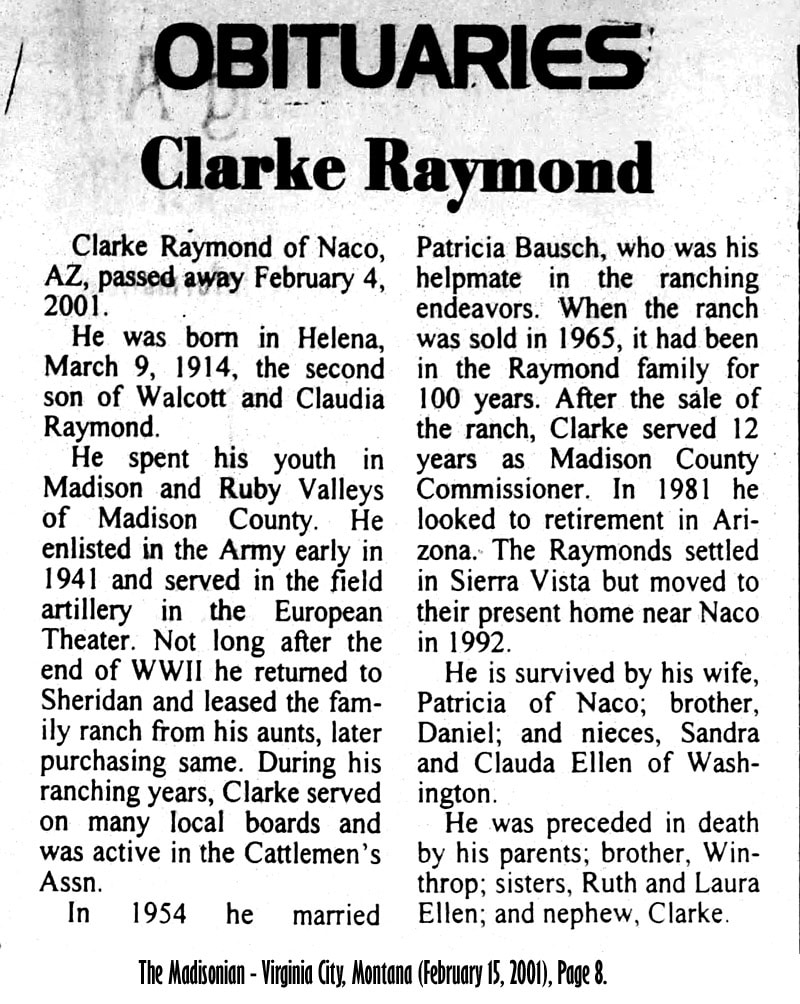
No mention of Vollie Belle Haston Raymond. I wonder how many people back home in Montana ever knew the story of what happened to his first wife.
Supreme Court of Tennessee Reversal of the Clarke Raymond Conviction

ADCOCK v. STATE, 191 Tenn. 687 (1949)
Opinion filed January 17, 1949 (the day before the reversal of the Clarke Raymond decision)
Note: Judge R.W. Smartt was the judge in this case as well as the Clarke Raymond case. Clarence E. Haston (from McMinnville) was attorney for the plaintiff in error. He was attorney for the state in the Clarke Raymond case. Nat Tipton, Assistant Attorney General who wrote the ruling for the TN Supreme Court in the Clarke Raymond case apparently wrote the Supreme Court’s ruling in this case.
Summary of the Case Sent to the TN Supreme Court
13 Pages

Summary of the 2nd Circuit Court Case
As Presented to the TN State Supreme Court for an Appeal
Click on the Right Arrow to Read the 13 Pages in this Summary
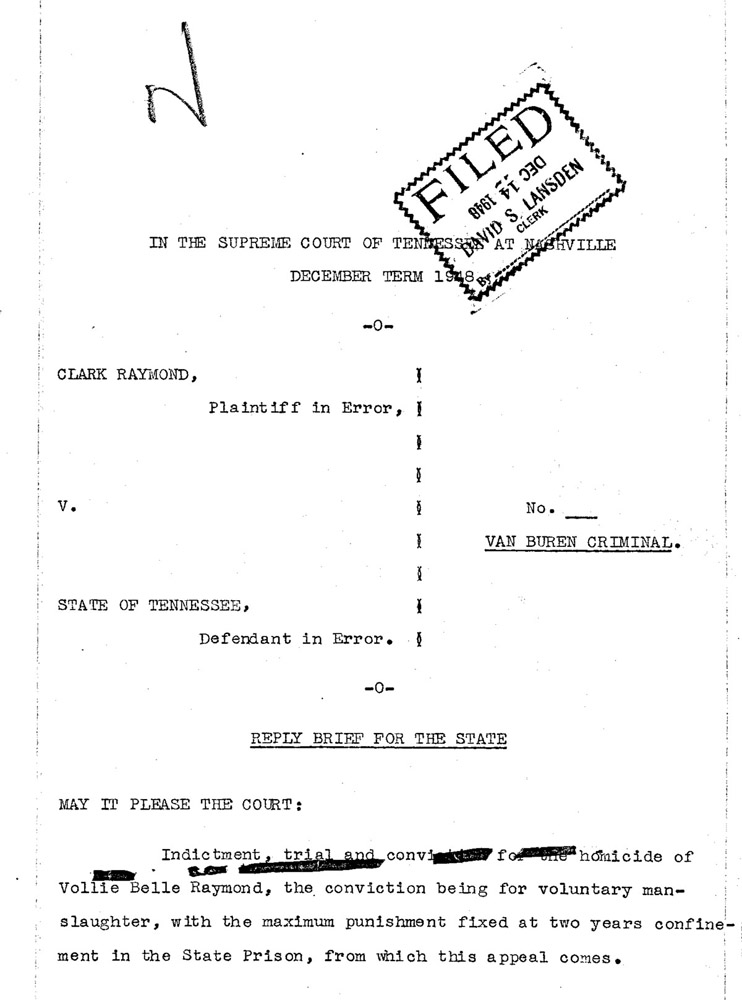
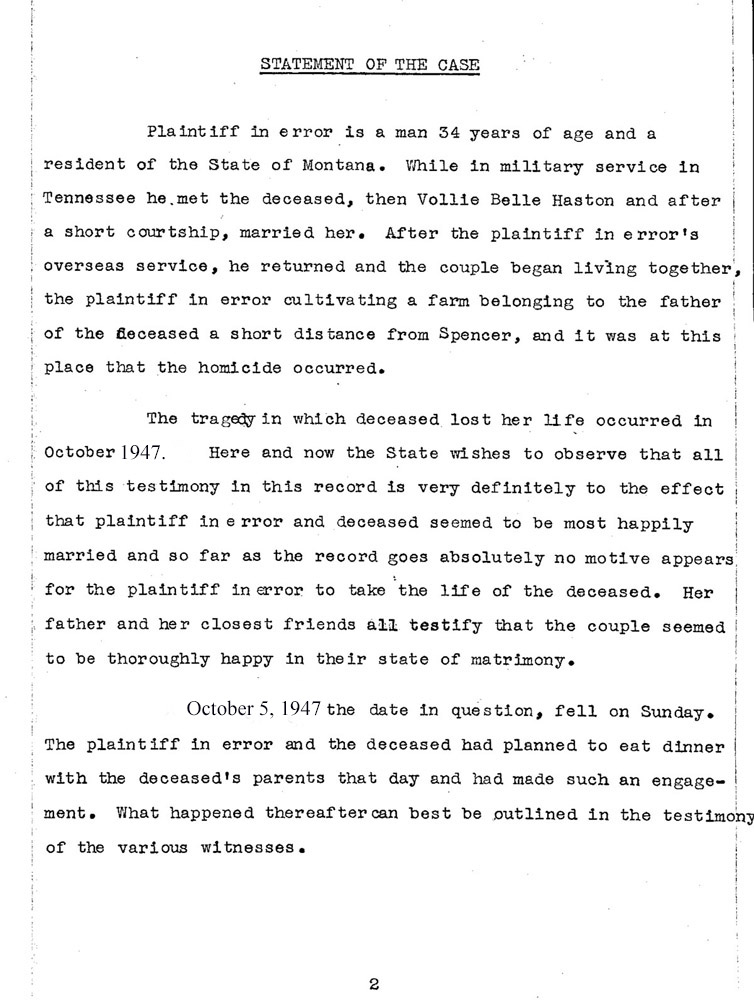
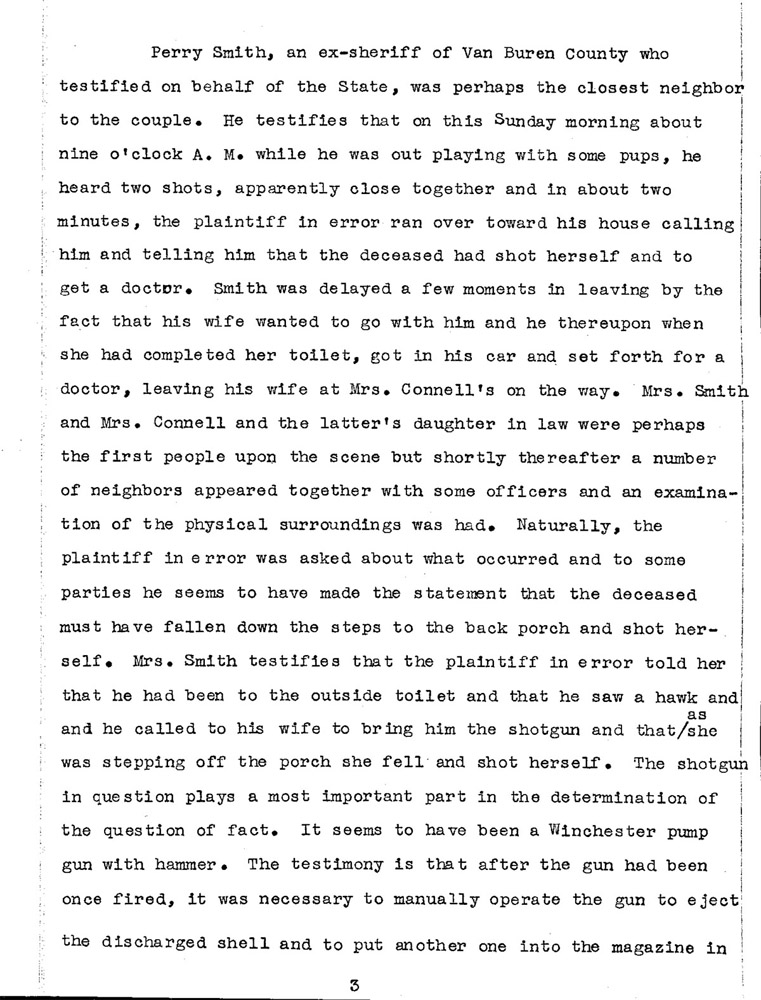
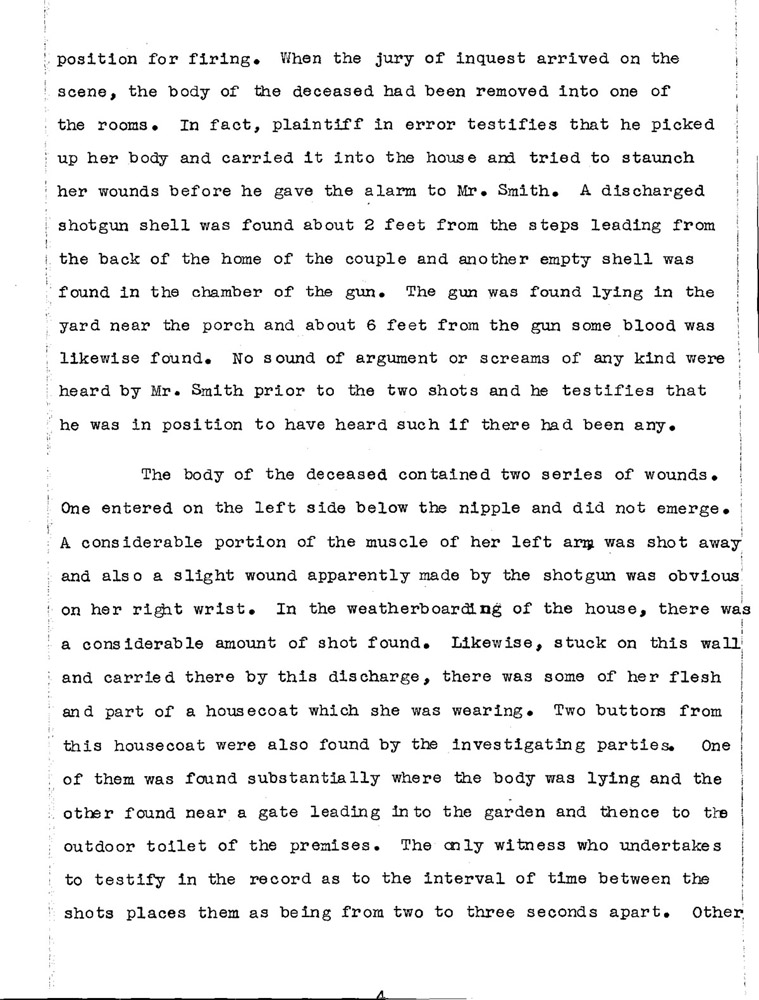


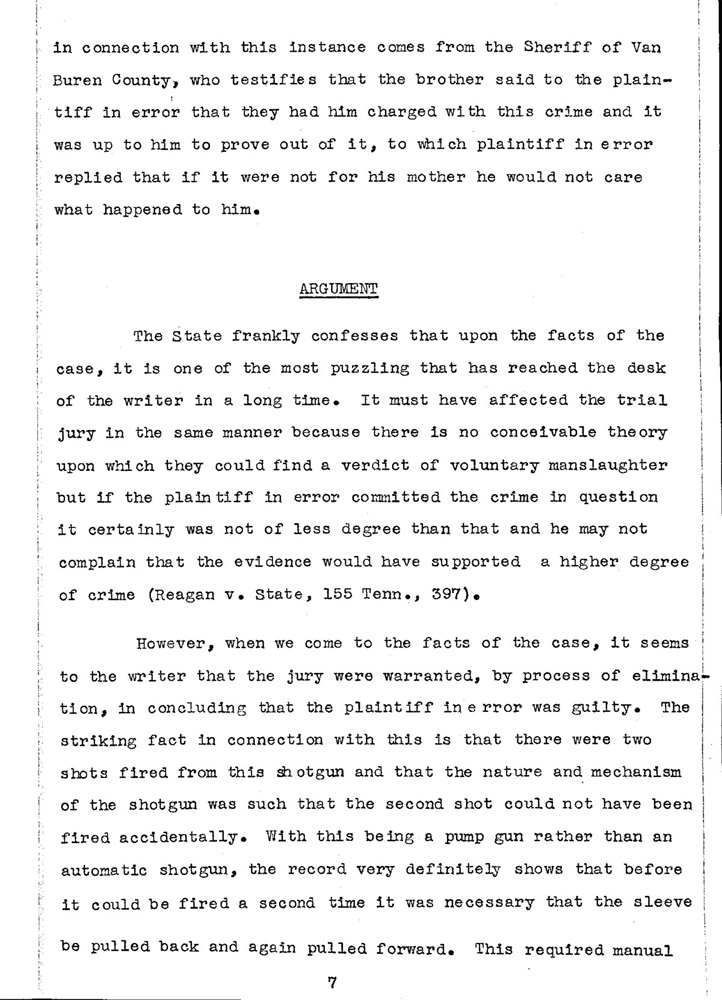
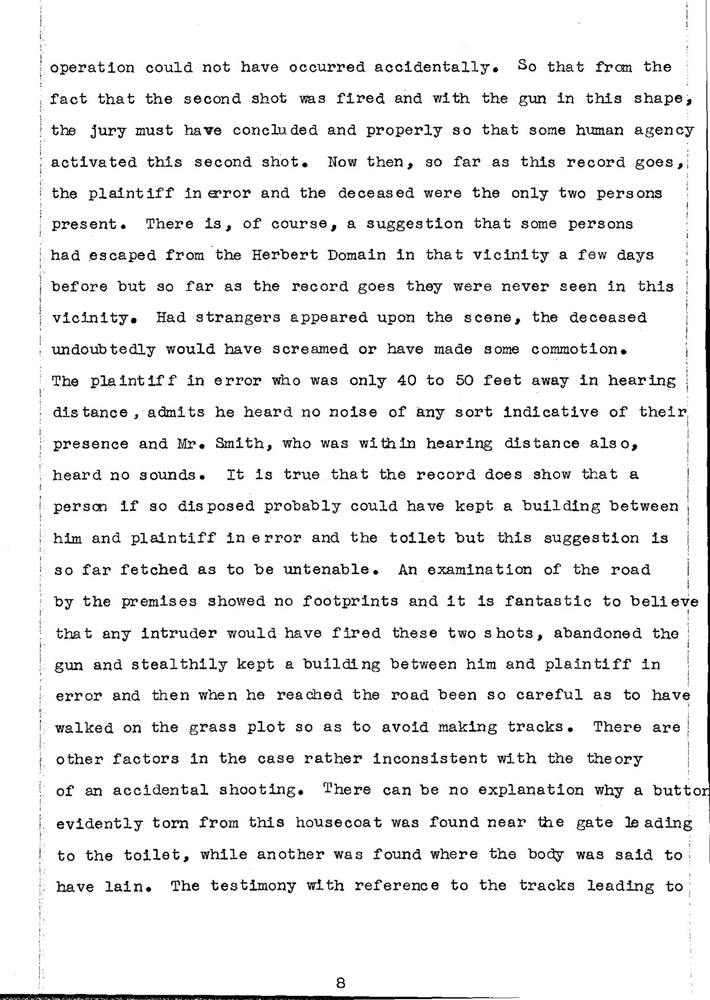


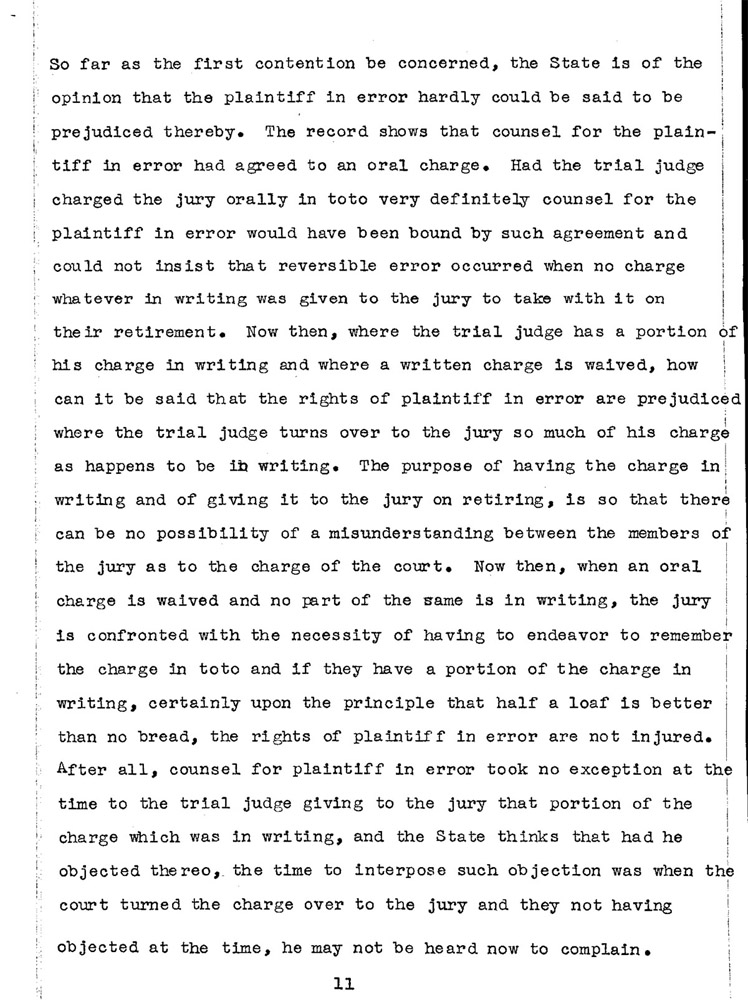
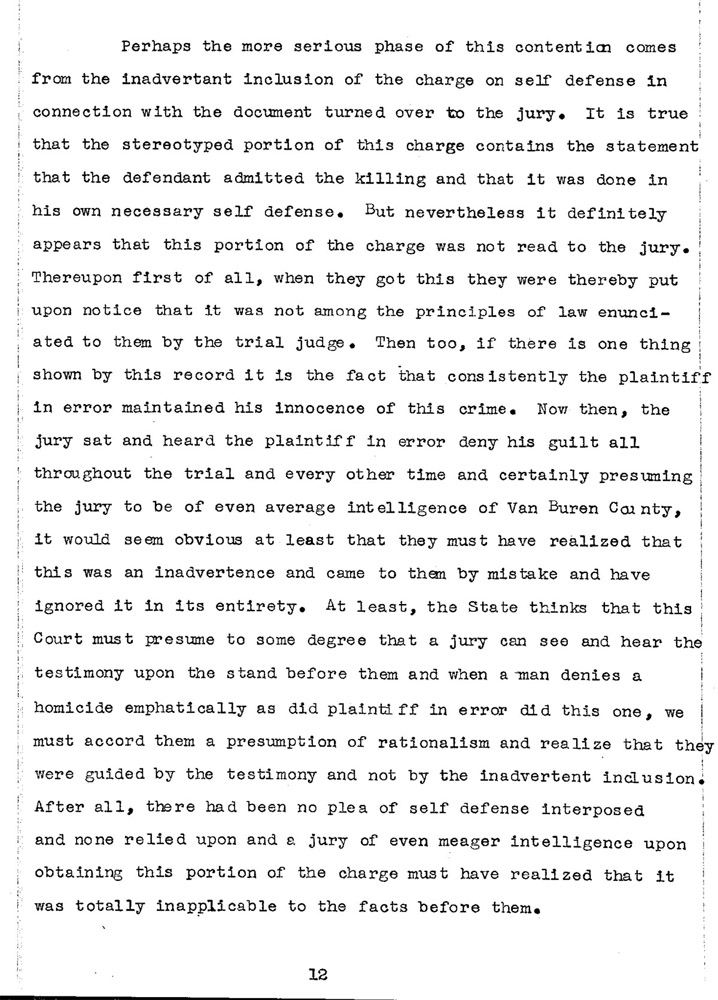

253 Pages – The Case Docket Reviewed by the Tennessee Supreme Court
Includes Transcript from the Second Circuit Court Trial with Witnesses, etc.
Two Key People from the Murder Trial
Perry Smith was a former Sheriff of Van Buren County, TN. He and his wife were the closest neighbors to, and good friends of, Clarke and Vollie Belle Haston Raymond. It was Perry Smith that Clarke Raymond ran to after Vollie Belle was shot. Perry Smith was the first person to examine the murder scene following Vollie Belle’s death. He was the prosecution’s star witness in the murder trial. Judge R.W. Smartt was the Circuit Court Judge who was in charge of the case in Spencer.
1950 Cummings Reunion
Less than three years after the State vs. Clarke Raymond trial – what do you think Perry Smith and Judge Smartt were discussing? I wonder if Perry Smith is asking the judge, “WHY did you fail to send a written copy of your charge to the jury into the jury room for their deliberation?” Judge Smartt retired that year (1950), but continued to fill in for other judges until at least 1957.
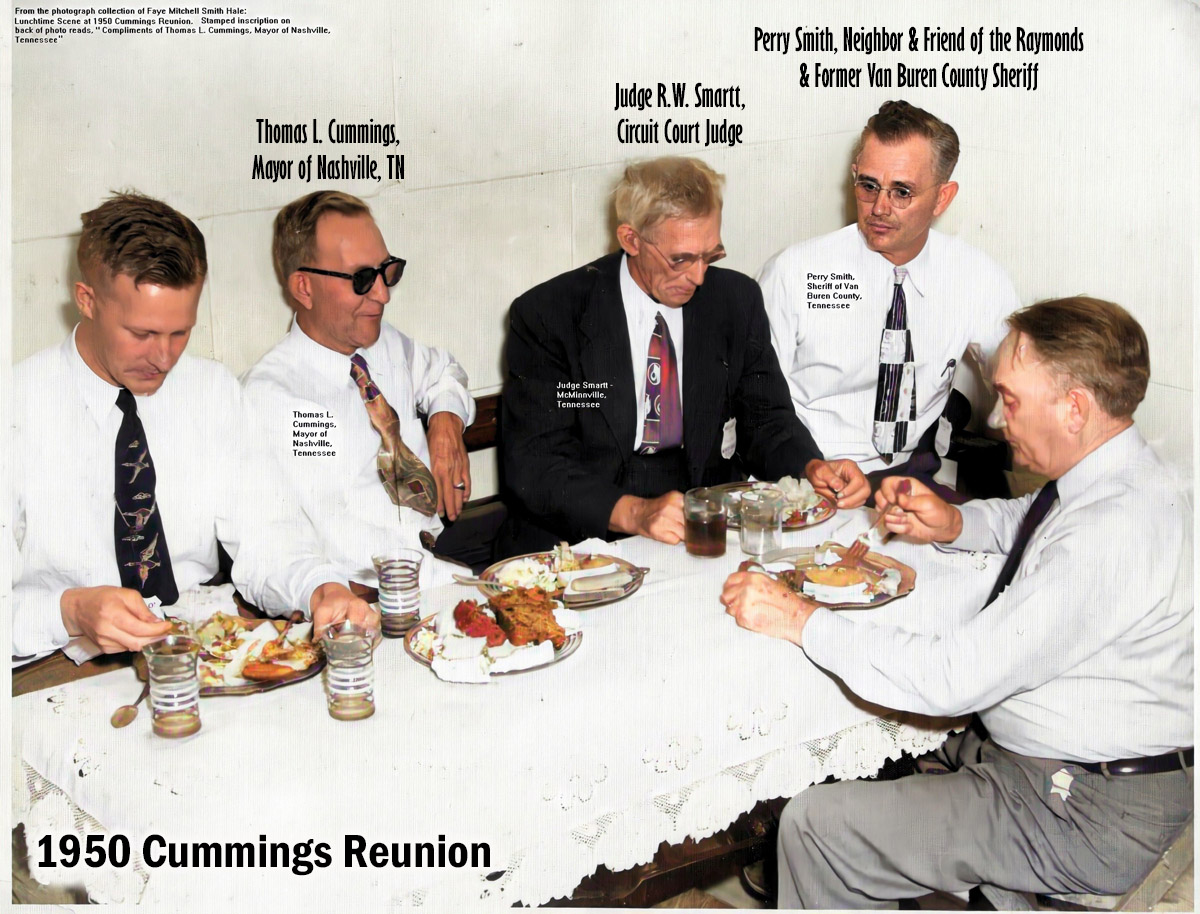
If you appreciated this article, please share it with others who might also enjoy it.

